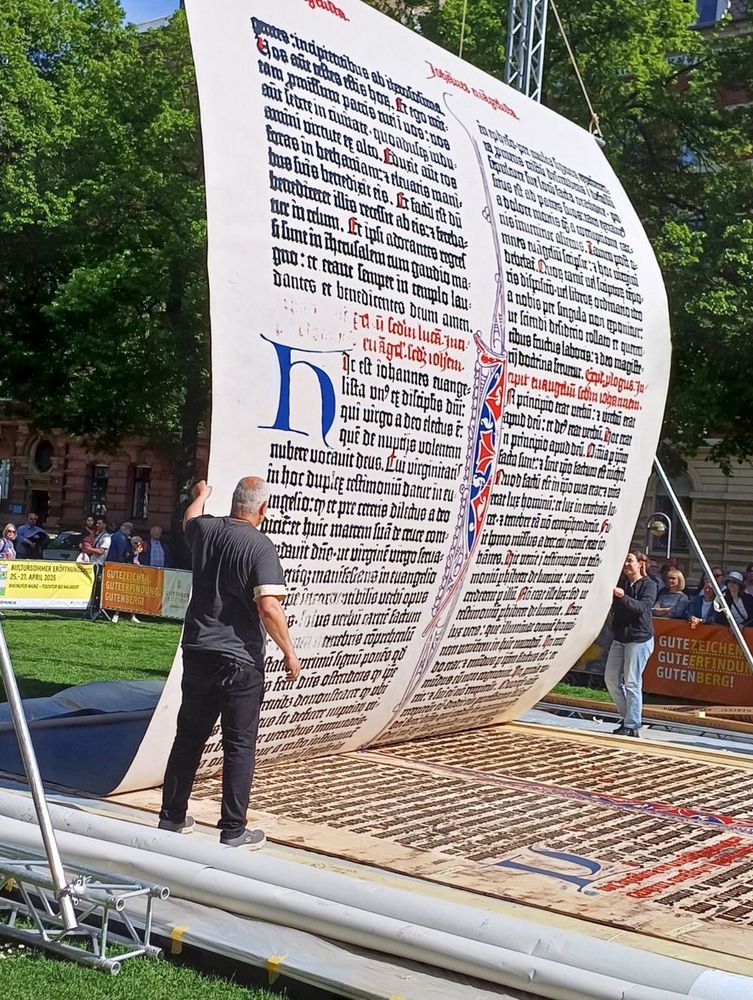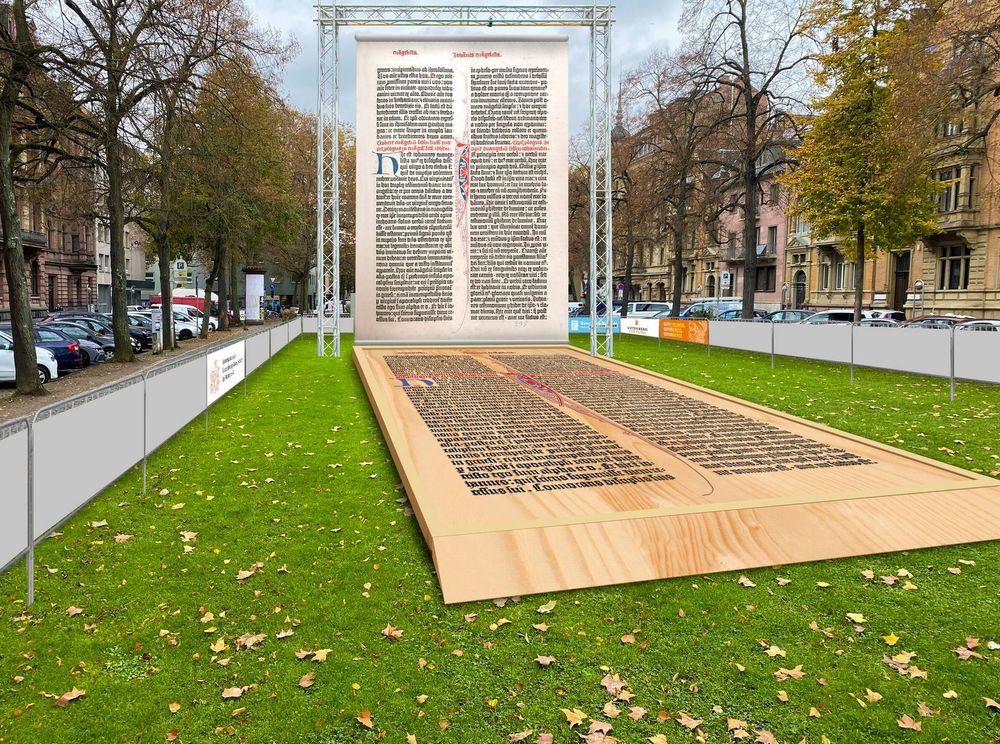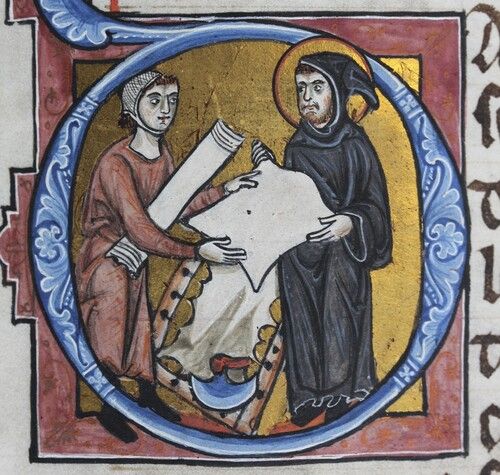
New issue of The Monist Vol. 108, No. 3 (2025) academic.oup.com/monist/issue... The Philosophy of Ibn Sīnā (Avicenna) @mszarepour.bsky.social @dlblack58.bsky.social @histphilosophy.bsky.social
20.08.2025 01:46 — 👍 20 🔁 8 💬 0 📌 0@scholiahom.bsky.social
Medieval scholarship. Manuscripts and books.

New issue of The Monist Vol. 108, No. 3 (2025) academic.oup.com/monist/issue... The Philosophy of Ibn Sīnā (Avicenna) @mszarepour.bsky.social @dlblack58.bsky.social @histphilosophy.bsky.social
20.08.2025 01:46 — 👍 20 🔁 8 💬 0 📌 0
“Standing on the Shoulders of Giants”: Revisiting Bernard of Chartres’ Metaphor and Its Hidden Legacy www.medievalists.net/2025/08/stan... #medieval
06.08.2025 15:07 — 👍 12 🔁 2 💬 0 📌 0

Fragment from a MS of Robert Grosseteste's Latin translation of Aristotle's Ethica Nicomachea (book 5) with a set of late-antique and Byzantine commentaries (Copenhagen, KB, Fragm. 1676). Fragm. 1677 is from the same text.
www5.kb.dk/manus/vmanus...

Donatus is seated on a glorious chair writing his grammar. His inkpot is held by tiny Heinre.
BL Arundel 43; Sedulius Scotus, Expositio super primam edicionem Donati grammatici; Germany; 12th century; f.80v

New MSS images @ manuscripta.at include some Aristotelica. Here the opening of "De inundatione Nili", a Latin translation by William of Moerbeke (contrary to the catalogue entry) of a text that does not survive in Greek (@uni-graz.at, Ms 93, f. 273v)
manuscripta.at?ID=23286

A photo of the printing event in Mainz (from April 26-27th, 2025) showing a moment of the printing process: two men are lifting the paper from the woodblock. Copyrights from Markus Kohz.

A photo of the printing event in Mainz (from April 26-27th, 2025) showing the giant woodblick, and the giant printed paper open air. Copyrights from Markus Kohz.
Just in case if you missed this printing event in #Mainz: they publically printed a giant page of the Gutenberg bible in the format 5 x 7,20 meter. #bookhistory #skystorians
29.04.2025 09:16 — 👍 968 🔁 270 💬 12 📌 46
Aristoteles
𝗗𝗲 𝗰𝗼𝗹𝗼𝗿𝗶𝗯𝘂𝘀
𝗧𝗿𝗮𝗻𝘀𝗹𝗮𝘁𝗶𝗼𝗻𝗲𝘀 𝗕𝗮𝗿𝘁𝗵𝗼𝗹𝗼𝗺𝗮𝗲𝗶 𝗱𝗲 𝗠𝗲𝘀𝘀𝗮𝗻𝗮 𝗲𝘁 𝗚𝘂𝗶𝗹𝗹𝗲𝗹𝗺𝗶 𝗱𝗲 𝗠𝗼𝗿𝗯𝗲𝗸𝗮
Edited by Lisa Devriese
More info: bit.ly/4jBZULO
#Aristotle #Philosophy #Literature #Medievalsky #Latin #Greek #Philosophysky #Medieval #MiddleAges

The conflict between Peter the Apostle and Simon Magus
St. Gallen, Stiftsbibliothek, Cod. Sang. 86; The Pseudo-Clementines; c. 950 CE-970 CE; Einsiedeln; p.6
(e-codices.ch/en/list/one/...)

Scribes, Not Just Authors: New Study Uncovers Editorial Brilliance in Medieval Syriac Manuscripts www.medievalists.net/2025/04/scri... #medievalmanuscripts #Syriac #MiddleAges
22.04.2025 16:12 — 👍 11 🔁 3 💬 0 📌 0Adsit igitur rhetoricae suadela dulcedinis, quae tum tantum recta calle procedit cum nostra instituta non deserit.
Boethius, Consolatio Philosophiae

journal cover
New issue of Journal of Late Antiquity Vol. 18, No.1 (2025) muse.jhu.edu/issue/54365 #openaccess @projectmuse.bsky.social @hopkinspress.bsky.social @thesaurosaur.bsky.social Translation and Greek-Latin Bilingualism in Late Antiquity
10.03.2025 15:18 — 👍 24 🔁 16 💬 0 📌 1New entry "The Textual Transmission of the Aristotelian Corpus" by Justin Winzenrieth plato.stanford.edu/entries/aris... Stanford Encyclopedia of Philosophy
09.03.2025 01:19 — 👍 9 🔁 3 💬 0 📌 0
Hamburg Bible, Copenhagen, Royal Danish Library, Gl.kgl.S. 4 2°, vol. 2, fol. 183r. Illustration of the parchment-maker.

Farmer with Icelandic calf that is several days old.

Diagram showing placement of different parts of the animal’s body.

Hamburg Bible, Gl.kgl.S. 4 2°, vol. 1. Diagram showing placements of necks (green) and rumps (yellow) in the quires of the text-block.
🧵 1/5: I'm THRILLED to see Jiří Vnouček's paper on the Hamburg Bible's parchment finally published with such stunning illustrations (73 in all)!
This research shows how a careful reading of parchment tells a rich story of its creation.
www.tandfonline.com/doi/full/10....

On my desk...
05.03.2025 09:22 — 👍 23 🔁 5 💬 1 📌 1
Page populated with P's! Pretty!
Not because the scribe imitated the p-language: the text is from Aristotle's Problems, in which every section opens with "Propter quid..."!
(Admont, Benediktinerstift, Cod. 345, f. 79r)
manuscripta.at/diglit/AT100...